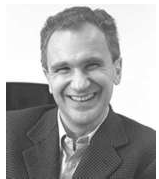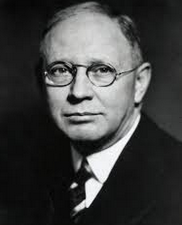-*Did New Year’s Resolutions fade as quickly as the month of January?

Katherine Milkman
If so, University of Pennsylvania Katherine Milkman has a recommendation to resume the good intentions toward goals: “Nudges”—small environmental interventions that can shift behavior to increase adherence to challenging commitments, whether at work or in personal life.

Hengchen Dai
Milkman collaborated with Wharton colleague Hengchen Dai and Harvard’s Jason Riis to investigate “temporal turning points” – moments that feel like a new beginning, like New Year’s Day or beginning a new job or school.

Jason Riis
Milkman, Riis, and Dai reported several examples of the “fresh start effect”: They found that the number of online Google searches for the term “diet” increase following temporal landmarks like the beginning of a new week, month, year, or semester; a birthday or a holiday.
The largest increase—82% above the baseline—occurred immediately after New Year’s Day for nine years they studied.
Similarly, the number of gym visits of 12,000 undergraduates over 18 months increased in January, then declined, with smaller increases at the beginning of each week, each month, and each term.
 This pattern also occurred among 43,000 participants in a goal-setting website, stickK, over 30 months.
This pattern also occurred among 43,000 participants in a goal-setting website, stickK, over 30 months.
Members can set goals and contractually agree to consequences for failing to attain them, such as community sanctions to monetary payments to disliked organizations.
The greatest number of contracts—145% above the average rate—were signed at the beginning of the New Year, and more contracts were signed at the beginning of each week.

Richard Thaler
Commitments to pursue and return to goals increase after these “notational boundary,” described by Richard Thaler of University of Chicago.
A temporally-triggered “fresh start” can compensate for limited willpower and persistence by giving people a chance to restart their commitments.
Besides “temporal turning points,” self-designed “nudges” can be contingency plans for a specific corrective action when confronted with the temptation to deviate from the goal path: “Whenever situation x arises, I will initiate the goal-directed response y.”

Peter Gollwitzer
New York University’s Peter Gollwitzer calls these mitigation plans “implementation intentions,” which result in better adherence to goal-directed efforts when developed before tempting situational cues.

Stephen Ciccone
The stock market’s “January Effect” of better-than-average performance early in the year may result from the “fresh start” phenomenon, although Stephen J. Ciccone of University of New Hampshire argues that it may be more affected by investor optimism and the “false hope syndrome.”

Janet Polivy
University of Toronto’s Janet Polivy and C. Peter Herman describe the “false hope syndrome’s” unrealistic expectations about the likely speed, amount, ease, and consequences of self-change attempts, and subsequent disappointment of these optimistic aspirations.
Ciccone found that investor sentiment, as measured by the University of Michigan’s Index of Consumer Confidence, peaks in January and suggested that optimistic bid up stock prices of firms with higher levels of uncertainty.

C. Peter Herman
Typically, these firms are unable to meet the optimistic expectations, and disappoint investors when they under-perform.
However, this pattern continues each year, probably due to the combined impact of “fresh start effect” and the “false hope syndrome.”
Unrealistic optimism has been well-documented in overestimates of personal abilities, future performance and the impact of achieving goals, as well as underestimates of the time and effort to achieve goals.

Jeffrey Jensen Arnett
Jeffrey Jensen Arnett of Clark University found that both 200 adolescents and more than 200 adults held optimistic biases regarding the risks of smoking even though the strong majorities of smokers and nonsmokers in these groups agreed that smoking is addictive and causes death for “most people” who smoke.
However, the adolescent and adult smokers doubted that they would die from smoking even if they smoked for 30 or 40 years, and most adolescents believed that they “could smoke for a few years and then quit.”

Likewis Roger Buehler
Likewise, most people underestimate time required to complete tasks, called “planning fallacy” by Wilfred Laurier University’s Roger Buehler, Dale Griffin of University British Columbia and University of Waterloo’s Michael Ross.

Dale Griffin
They found that 465 volunteers:
- Underestimated their own but not others’ completion times for academic and nonacademic tasks
- Focused on future plans rather than comparing with similar past experiences when making completions time estimates
- Attributed their past errors in predicting completion times to external, transient, and specific factors, implying less personal accountability for misjudgments.

Mike Ross
Volunteers were able to eliminate their bias toward inaccurately optimistic estimates when they explicitly considered connect relevant past experiences to inform current estimates.

Fiona Jones
The optimism bias can be reduced by setting modest, attainable goals, according to University of Leeds’ Fiona Jones and Adrian Coggins with Peter Harris of University of Sussex and University of Hertfordshire’s Hilary Waller.
They compared 119 volunteers’ expectations about their participation in a twelve-week-long exercise course and their actual attendance, and found that participants who set smaller goals were more likely to achieve and maintain the goal behavior over time.
-*How effective are “temporal turning points” to initiate and re-start positive behaviors toward your goals?
-*How do you guard against optimism bias and “false hope syndrome” in planning and executing toward your goals?
RELATED POSTS:
Twitter @kathrynwelds
Blog – Kathryn Welds | Curated Research and Commentary
Google+
LinkedIn Open Group Psychology in Human Resources (Organisational Psychology)
Facebook Notes:
©Kathryn Welds





























